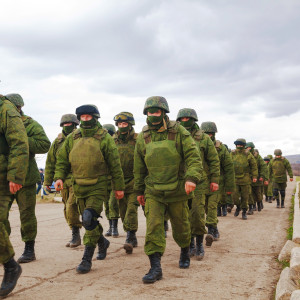Although nothing new, the eyes of the world have recently turned to a number of regions that have expressed dissatisfaction with the governance of their respective mother countries. Movements within many of these regions are actively seeking to break away from the states that rule them. Some movements—such as the petitions filed in 2012 by American citizens from all 50 states (in which fewer than 10 states were able to collect 20,000 or more signatures, and no state but Texas collected more than 100,000)—are unorganized, non-serious attempts to vent frustration with the current leadership; others, such as the Chechen separatist movement within the Russian Federation are organized and violent campaigns, aimed sincerely at a break between the two entities; still others, like the recent vote in Crimea, are movements launched under the aegis (or even the instigation) of a great power. The recent prominence of separatist movements in Ukraine (Crimea), Great Britain (Scotland), and Italy (Veneto), among others, prompts two questions: when do secession attempts turn violent, and does a successful break encourage other secession movements?
According to the Secession & Great Power Recognition dataset, compiled by Bridget Coggins (currently at the Council on Foreign Relations), there were 259 true secessionist movements around the world between 1931 and 2000. Of these 259, 56 (about 22%) had experienced some measure of success—either by winning a war for independence or by becoming a full member of the United Nations—by the end of the millennium. The good news is that the vast majority of cases, for both successful and unsuccessful secession movements, never turn violent. More interestingly, as the figure below suggests, non-violent secession is more common among successful attempts at secession than among non-successful attempts.
Approximately two-thirds of secession attempts are free of armed conflict for the entire span of the movement. What about when violence does occur? The categories in the figure represent a measure of the level of escalation in a conflict, measured by the highest number of deaths in a year during the struggle. The middle category (fewer than 1,000 deaths) corresponds to a moderate level of violence: the two sides are unable or unwilling to inflict massive casualties on one another. This category is substantially overrepresented among unsuccessful attempts, relative to those that are successful. Only two cases—the Armenians and the Azeris, both struggling against the Soviet Union in 1990—saw low-level violence lead to success, and even these are somewhat anomalous as they were relatively quick revolutions, which likely did not have time to escalate. Moderate levels of violence can be counterproductive: they are not sufficient to coerce the state into allowing secession, and they tend to alienate the international community. Secessionists appear to realize this, as conflicts carried out at a low level are relatively rare. Moreover, peaceful movements tend to remain peaceful. Over 87% of movements that turned violent did so within the first two years, and all but one (the Karenni, who initiated a low-level conflict against the Burmese after 16 years) began their campaigns in the first five. Thus, those movements that begin peacefully can generally be expected to remain that way. This can help the government to negotiate in good faith with the secession groups.
What about contagion? Do successful movements inspire further attempts? This doesn’t appear to be the case. The beginnings of secession movements do exhibit a pattern of sorts, with peaks of activity every 15-20 years. As the figure below demonstrates, movements tend to cluster around certain time periods, with relatively low levels of activity for a several years, followed by a surge in new attempts at independence. However, this activity does not seem to be influenced by the success of others. Indeed, years of success tend to coincide with or follow, rather than precede, booms in activity. This suggests that secession attempts tend to be sparked by outside events, such as the internal disintegration of the USSR in the late 1980s and early 1990s, or the White House’s implementation of an online petition system (with a guaranteed response for sufficiently large petitions), which reduce the costs or increase the benefits of secession (or, in the latter case, the discussion of secession).
So what is to be made of the recent popularity of secession attempts across the globe? In general, they are likely a symptom of discontent, rather than a cause. As the global recession continues, it is possible that we will continue to witness a growth in the number of regions that express a desire to sever ties from their respective homelands. Fortunately, however, these movements, in general, should not be especially destabilizing, as they tend to be responses to perceived problems, rather than opportunistic attempts to cash in on someone else’s success. The genesis of a secession movement, then, should be relatively predictable for someone who knows the region. Additionally, whether they succeed or fail, these movements are usually peaceful. This has certainly been the case in Scotland and Veneto, and to a lesser extent, it describes Crimea as well. Thus, even if the state of global affairs continues to degenerate, resulting in a massive number of separatists, if history is any guide, then we can expect most of them to express their grievances in a peaceful and cooperative way. The US and the international community at large can best respond by facilitating communication between secessionists and their governments, in order to help the two sides come to a mutually acceptable agreement.



